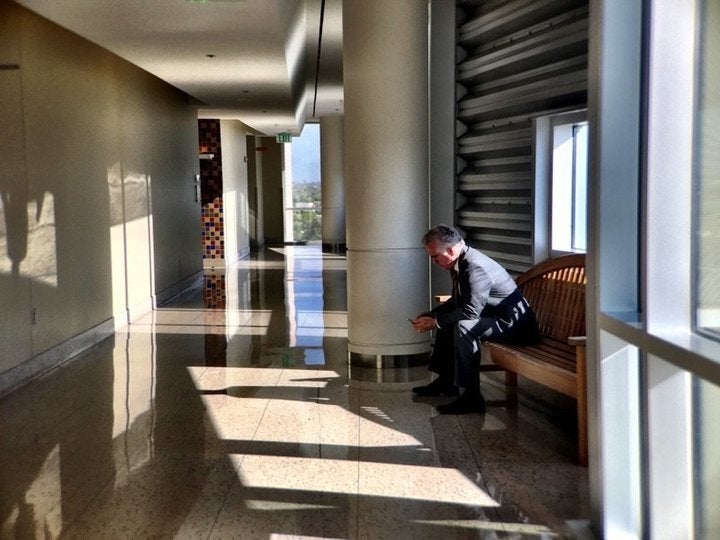This moment 13 years ago totally mattered to me because our children were small and we had hard questions to answer like "Why does God let terrible things like this happen?" This moment further coincided with my decision to start a blog in 2004. As you can read below, I took it upon myself to respond to New York Times columnist, David Brooks' January 1, 2005 piece titled, "A Time to Mourn."
 |
| Source: https://www.youtube.com/watch?v=7DWuRQuqDgE |
It began at 8AM on December 26, 2004 with a 9.3 earthquake in Indonesian waters close to 8 a.m., setting off a deadly tsunami that inflicted devastation from the coastlines of Somalia, in east African, to Sumatra in Southeast Asia, killing approximately 230,000 people. It had the power of 23,000 Hiroshima-type atomic bombs (National Geographic Society. "The Deadliest Tsunami in History?" May 2, 2015).
I imagine that a good number of you remember this time period since most were home for the holidays, and our eyes were all glued to our televisions, watching this colossal disaster and its aftermath of historic proportions unfolding before our very eyes.
While most earthquakes last for only a few seconds, it is reported that the Sumatra-Andaman earthquake, as it is known to the scientific community, lasted almost ten minutes, triggering other earthquakes as far away as Alaska and causing the entire planet to move at least a few centimeters. The epicenter of the earthquake was 100 miles west of Sumatra, at the western end of the area known as the “Ring of Fire” for its intense seismic activity. That region has been home to more than 80 percent of the world’s largest earthquakes. Since 1900, when accurate measurements began to be made, only three or four earthquakes have rivaled the Sumatra-Andaman in power (see History Channel, for more information).
Instead of global warming being the culprit, it was Earth's tectonic plates pressing against one another to the point that the Earth "shuddered."
The earthquake was the result of the sliding of the portion of the Earth's crust known as the India plate under the section called the Burma plate. The process has been going on for millennia, one plate pushing against the other until something has to give. The result on December 26 was a rupture the USGS estimates was more than 600 miles (1,000 kilometers) long, displacing the seafloor above the rupture by perhaps 10 yards (about 10 meters) horizontally and several yards vertically. That doesn't sound like much, but the trillions of tons of rock that were moved along hundreds of miles caused the planet to shudder with the largest magnitude earthquake in 40 years.
Sadly, and tragically, a third of all killed were children, countless numbers swept into the sea.
Conflating God with nature, David Brooks raises an existential question regarding who we are as humans before "this catastrophic, genocidal nature," the latter of which often gets romanticized in literature. Hundreds of thousands of individuals caught in its path seemed cruel and arbitrary, contradicting the view of God and nature as "a nurse or friend."
Rather than falling into an existential crisis myself, I chose to focus in my response (see below) to the building of a global community which I still think is a good response even if I dodged Brooks' question, stating that we need to "address the moral and ethical dimensions of our global relationships" and come together in times of catastrophe like these. I write this even as FEMA is now an officially broken system (read Bill Weir, CNN, December 21, 2017 "Hellish summer of hurricanes smashes FEMA.")
My fresh take this evening is the potential survivability of a tsunami when local, indigenous knowledge is present and valued. The case in point regards native islanders from the Indonesian island of Simeulue where the oral tradition together with historical memory of a tsunami that occurred over a hundred years ago in 1907, helped them to assess it accurately and retreat to higher ground with a total of 7 inhabitants dying out of a population of 82,555 that were otherwise vulnerable (read this blog post by Musfarayani which elaborates on this experience in detail; also check out this research study that also notes the importance of education and the oral tradition of native villagers).
The moral of the story here is that if our ways of knowing accord value to ancestral wisdom and local knowledge—and ideally teach this in the educational system itself—nature is no longer the culprit. Instead, at the heart of the matter are "regimes of truth" aligned to systems of power that either disparage or simply disavow ancestral wisdom, local knowledge, and Earth-conscious ways of knowing.
So perhaps it's not so much whether nature is a friend or foe, but rather how our epistemologies, or ways of knowing, risk or enhance, our own species survivability.
Peace/paz,
Angela Valenzuela






